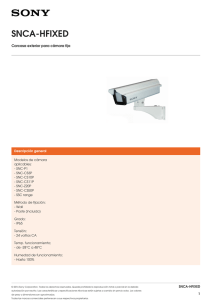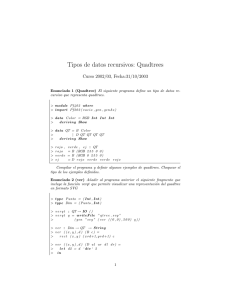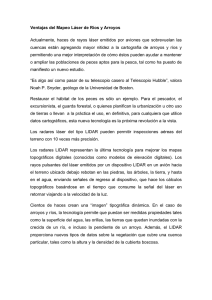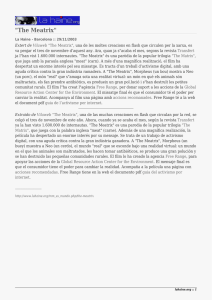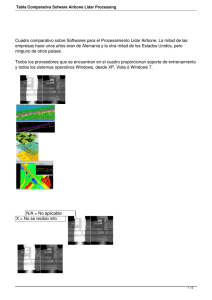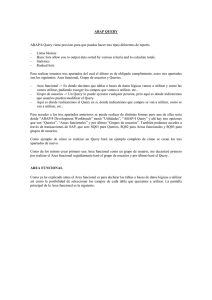IMPLEMENTACIÓN Y EVALUACIÓN EN ALGORITMOS DE
Anuncio
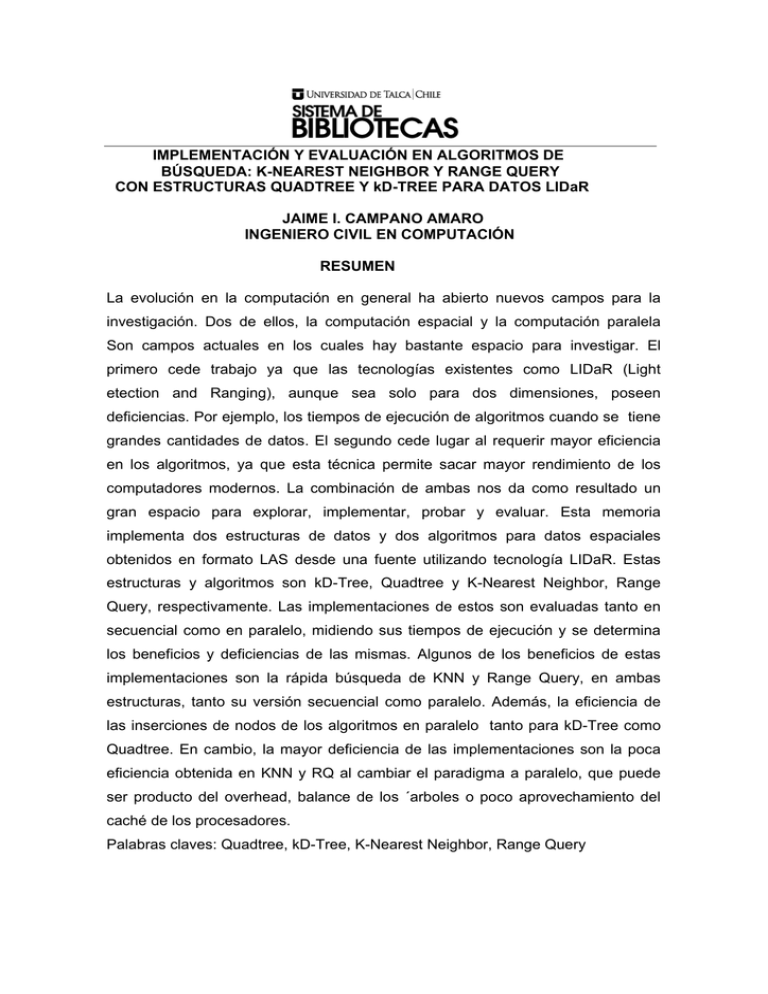
IMPLEMENTACIÓN Y EVALUACIÓN EN ALGORITMOS DE BÚSQUEDA: K-NEAREST NEIGHBOR Y RANGE QUERY CON ESTRUCTURAS QUADTREE Y kD-TREE PARA DATOS LIDaR JAIME I. CAMPANO AMARO INGENIERO CIVIL EN COMPUTACIÓN RESUMEN La evolución en la computación en general ha abierto nuevos campos para la investigación. Dos de ellos, la computación espacial y la computación paralela Son campos actuales en los cuales hay bastante espacio para investigar. El primero cede trabajo ya que las tecnologías existentes como LIDaR (Light etection and Ranging), aunque sea solo para dos dimensiones, poseen deficiencias. Por ejemplo, los tiempos de ejecución de algoritmos cuando se tiene grandes cantidades de datos. El segundo cede lugar al requerir mayor eficiencia en los algoritmos, ya que esta técnica permite sacar mayor rendimiento de los computadores modernos. La combinación de ambas nos da como resultado un gran espacio para explorar, implementar, probar y evaluar. Esta memoria implementa dos estructuras de datos y dos algoritmos para datos espaciales obtenidos en formato LAS desde una fuente utilizando tecnología LIDaR. Estas estructuras y algoritmos son kD-Tree, Quadtree y K-Nearest Neighbor, Range Query, respectivamente. Las implementaciones de estos son evaluadas tanto en secuencial como en paralelo, midiendo sus tiempos de ejecución y se determina los beneficios y deficiencias de las mismas. Algunos de los beneficios de estas implementaciones son la rápida búsqueda de KNN y Range Query, en ambas estructuras, tanto su versión secuencial como paralelo. Además, la eficiencia de las inserciones de nodos de los algoritmos en paralelo tanto para kD-Tree como Quadtree. En cambio, la mayor deficiencia de las implementaciones son la poca eficiencia obtenida en KNN y RQ al cambiar el paradigma a paralelo, que puede ser producto del overhead, balance de los ´arboles o poco aprovechamiento del caché de los procesadores. Palabras claves: Quadtree, kD-Tree, K-Nearest Neighbor, Range Query ABSTRACT The evolution in Computer science has opened new fields for research. Two of them, Spatial Computing and Parallel Computing are current fields in which there are quite opportunities to investigate. The first one gives us work because the existing technologies like LIDaR (Light Detection and Ranging), even just for two dimensions, have weaknesses. For example, the execution time with plenty of data. The second one gives us a space to require more efficiency in the algorithms, because this type of computing allows obtain more performance in current generation of computers. The combination of both gives us a big space to explore, implement, test and evaluate. This thesis implements two data structures and two algorithms for spatial data, in LAS format, from a source which uses LIDaR. This structures and algorithms are kD-Tree, Quadtree, K-Nearest Neighbor and Range Query, respectively. The implementation of those are evaluated as sequential algorithms as well as parallel algorithms, measuring their execution times and determining their benefits and weaknesses. Some of the benefits of these implementations are the quick search of KNN and Range Query, in both structures, in the sequential version and the parallel version. Also, the efficiency of the nodes insertion of the parallel algorithms for both structures. In the other hand, the worst weakness of the implementations is the inefficiency obtained in the parallel KNN and RQ, which can be result of the overhead, lack of balance of the tree or little use of the processor’s cache. Keywords: Quadtree, kD-Tree, K-Nearest Neighbor, Range Query

